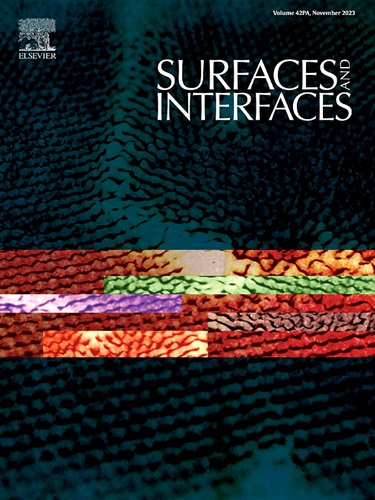Comparison of the inhibition effects of Morpholine-based inhibitors on plain carbon steel in 3.5 wt.% NaCl and 0.5 M H2SO4 environments: Experimental and theoretical
IF 5.7
2区 材料科学
Q2 CHEMISTRY, PHYSICAL
引用次数: 0
Abstract
Three organic compounds (i1, i2, and i3) were tested for their ability to inhibit corrosion on carbon steel in both saline (3.5 wt. % NaCl) and acidic (0.5 M H2SO4) solutions. Multiple techniques, including potentiodynamic polarization (PDP), electrochemical impedance spectroscopy (EIS), and scanning electron microscopy (SEM), were employed to evaluate corrosion behavior. All three inhibitors demonstrated positive effects, shifting the open-circuit potential to more positive values and reducing corrosion current density. However, i3 consistently outperformed i1 and i2, particularly in the acidic environment. At a concentration of 2.0 mM, i3 achieved maximum inhibition efficiencies of 94.2 % and 99.7 % in NaCl and H2SO4 solutions, respectively, based on the PDP and EIS results. EIS further confirmed the superior performance of i3, with higher impedance values and increased corrosion resistance at higher concentrations. Adsorption studies revealed that i3 followed the Langmuir adsorption isotherm in the acidic solution, indicating strong adsorption to the metal surface. SEM visualized the significant reduction in corrosion damage caused by the inhibitors, especially i3. However, i2 showed decreased stability over time, leading to reduced inhibition. Molecular dynamics simulations provided insights into the adsorption behavior of the inhibitors. i3 exhibited stronger bonding with the iron surface in the acidic environment, contributing to its superior performance. In conclusion, i3 emerged as the most effective inhibitor for carbon steel in both saline and acidic solutions. Its strong adsorption, high inhibition efficiency, and sustained performance make it a promising candidate for corrosion protection applications.

求助全文
约1分钟内获得全文
求助全文
来源期刊

Surfaces and Interfaces
Chemistry-General Chemistry
CiteScore
8.50
自引率
6.50%
发文量
753
审稿时长
35 days
期刊介绍:
The aim of the journal is to provide a respectful outlet for ''sound science'' papers in all research areas on surfaces and interfaces. We define sound science papers as papers that describe new and well-executed research, but that do not necessarily provide brand new insights or are merely a description of research results.
Surfaces and Interfaces publishes research papers in all fields of surface science which may not always find the right home on first submission to our Elsevier sister journals (Applied Surface, Surface and Coatings Technology, Thin Solid Films)
 求助内容:
求助内容: 应助结果提醒方式:
应助结果提醒方式:


